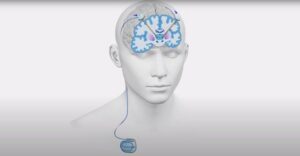Managing Fibrocystic Breast Changes: Symptoms and Self-Care Tips
3 min read
Fibrocystic breast changes are a common condition that affects many women. It refers to lumpy or rope-like breast tissue accompanied by pain, tenderness, or swelling. In this article, we will explore the symptoms of fibrocystic breast changes and provide self-care tips to help manage the condition effectively.
Understanding Fibrocystic Breast Changes:
Fibrocystic breast changes occur due to hormonal fluctuations that affect the breast tissue. These changes can cause the development of cysts, fibrous tissue, and areas of thickened tissue. While the exact cause of fibrocystic breast changes is unknown, hormonal imbalances and sensitivity to estrogen are believed to play a role.
Symptoms of Fibrocystic Breast Changes:
Breast Lumps: Women with fibrocystic breast changes may experience the formation of lumps or areas of thickened tissue in the breasts. These lumps are typically movable and can vary in size and texture.
Breast Pain and Tenderness: Fibrocystic breast changes often accompany breast pain or tenderness. The pain may be cyclical, worsening before the menstrual period and improving afterward.
Swelling and Breast Enlargement: Some women may notice swelling or enlargement of the breasts due to fluid retention and increased blood flow in the breast tissue.
Nipple Discharge: In some cases, fibrocystic breast changes may cause nipple discharge. The discharge is usually clear or slightly cloudy and is not usually a cause for concern.
Self-Care Tips for Managing Fibrocystic Breast Changes:
While fibrocystic breast changes are typically benign and not associated with an increased risk of breast cancer, self-care measures can help alleviate symptoms and improve comfort. Here are some tips:
Wear a Supportive Bra: Wearing a well-fitted, supportive bra can provide added comfort and help reduce breast pain and discomfort.
Apply Heat: Applying warm compresses or taking warm showers can help relieve breast pain and reduce swelling.
Limit Caffeine Intake: Caffeine has been associated with breast tenderness and can exacerbate symptoms of fibrocystic breast changes. Limiting or avoiding caffeine-containing beverages like coffee, tea, and soda may help alleviate symptoms.
Maintain a Healthy Lifestyle: Regularly exercising, maintaining a balanced diet, and managing stress levels can contribute to overall breast health and help reduce symptoms.
Practice Breast Self-Exams: Regularly performing breast self-exams can help you become familiar with your breasts’ normal texture and appearance. This will enable you to detect any changes promptly and seek medical attention if necessary.
Seek Medical Evaluation: If you notice new or persistent changes in your breasts, such as a new lump or nipple discharge, it is important to consult a healthcare professional. They can perform a thorough examination and recommend further diagnostic tests if needed.
Conclusion:
Fibrocystic breast changes are a common condition that many women experience during their reproductive years. While the disease can cause discomfort and concern, it is generally not associated with an increased risk of breast cancer. By following self-care tips and maintaining regular breast health practices, women can effectively manage symptoms and maintain breast health. If you have any concerns or questions, it is always best to consult a healthcare professional for personalized guidance and support.






